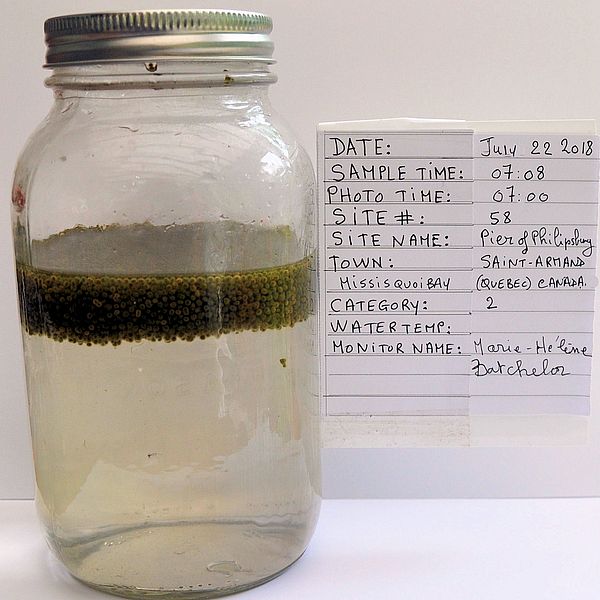Stay up to date on water conditions on Lake Champlain and inland lakes with LCC’s weekly cyanobacteria reports. The report compiles and summarizes data collected from over 100 LCC monitoring sites in New York, Vermont and Quebec. It also includes helpful information on how to recognize and report cyanobacteria and actions to take to reduce bloom frequency.
You’ll learn more about cyanobacteria like Gloeotrichia (shown in the photograph). For example, it’s not uncommon to find this species in the Inland Sea. This year it’s also been reported in St. Albans Bay and Missisquoi Bay. It forms spherical colonies that grow to roughly 1/16th of an inch and look like coriander seeds or tapioca on the water’s surface. A Gloeotrichia colony often has a yellowish-green center with hundreds of filaments radiating from its core. Nutrients, light and warm temperatures all factor into its growth. Gloeotrichia has a unique ability to over-winter. Resting cells grow in the sediments in the spring, feeding off nutrients. The cells divide and grow into colonies. Gas bubbles within the colonies enable them to rise to the lake’s surface. The colonies are very buoyant and can move around a lot with wind and waves so they may appear and disappear and also be pushed onto the shoreland.
LCC’s Water Reports are emailed from mid-June through the early fall when cyanobacteria monitoring ends. <link lcc-at-work algae-in-lake cyanobacteria-weekly-report-subscription _blank>Click here to sign up.
